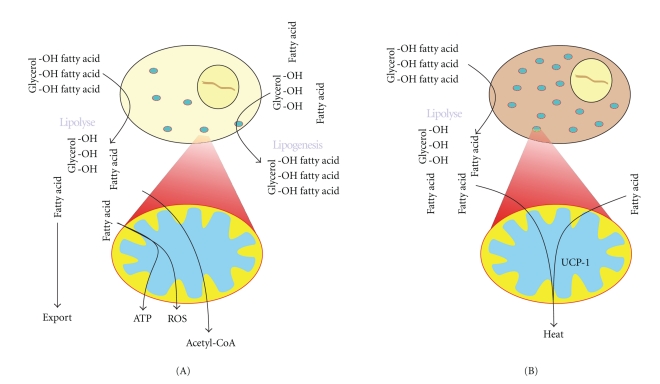Figure 2.
(A) The role of white adipose tissue (WAT) is to store excess dietary fat in the form of triglycerides (TGs) and to release free fatty acids (FFAs) in times of starvation or energy demand. In addition WAT releases several important factors that regulate energy homeostasis. Lipolysis takes place in the cytosol and is also dependent on processes in the mitochondria. The resulting FFA can be released to the blood or directly used as an energy source by β-oxidation in the mitochondria. In lipogenesis, glycerol and acyl-CoA produced in the mitochondria are used to generate TG for storage in the adipocytes. (B) In brown adipose tissue (BAT) the FFAs are β-oxidized, and the resulting acetyl-CoA enters the Krebs cycle. The reduction potential is used to form a mitochondrial proton gradient that instead of producing ATP is released by uncoupling protein 1 (UCP1), a process that generates heat.

